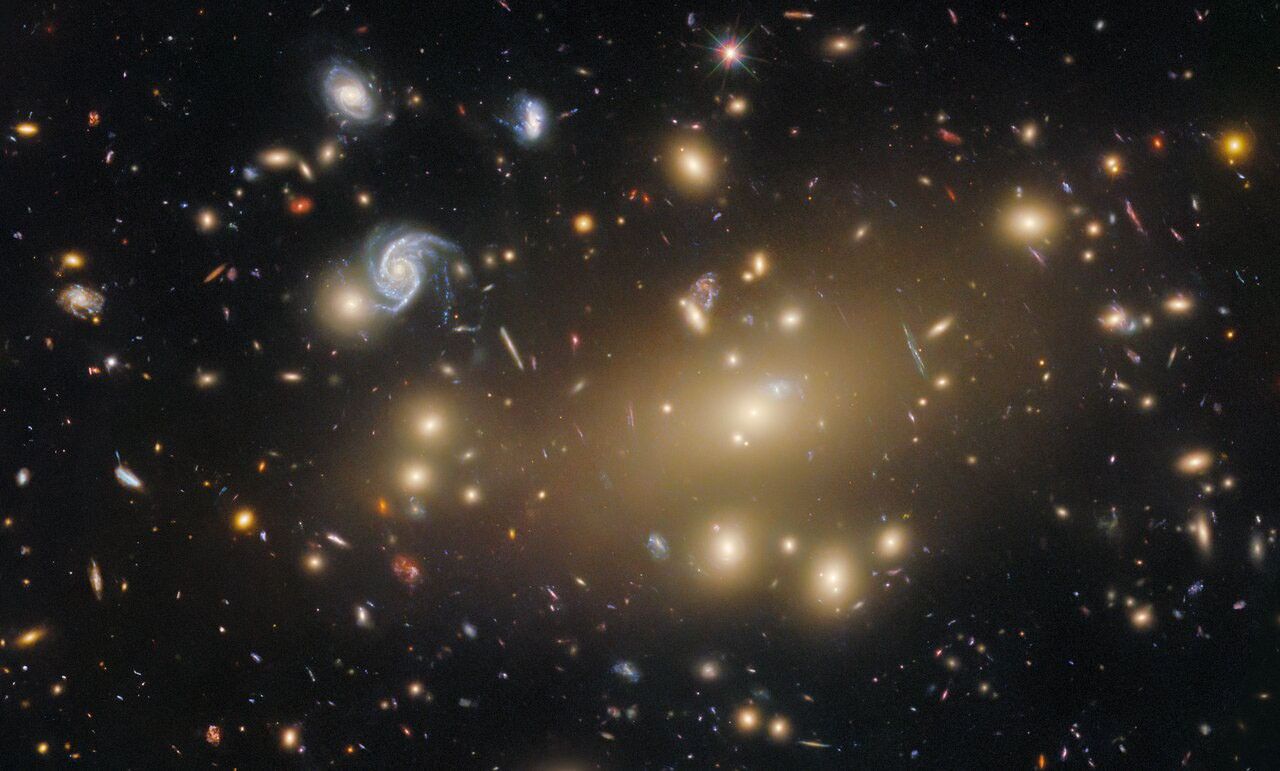RELEASE : 05-158
NASA's Hubble Chases Unruly Planet
A detailed image from NASA's Hubble Space Telescope offers the strongest evidence yet that an unruly and unseen planet may be gravitationally tugging on a dusty ring around the nearby star Fomalhaut (HD 216956).
The most detailed visible light image ever taken of a narrow, dusty ring unequivocally shows the center is a whopping 1.4 billion miles away from the star; a distance nearly halfway across our solar system. The most plausible explanation is an unseen planet, moving in an elliptical orbit, is reshaping the ring with its gravitational pull. The geometrically striking ring, tilted toward Earth, would not have such a great offset if it were only being influenced by Fomalhaut's gravity.
An offset of the ring center from the star has been inferred from previous lower resolution submillimeter wavelength telescope observations; and by applying theoretical modeling and physical assumptions. Hubble’s sharp images directly reveal the ring’s offset from Fomalhaut. The observations provide strong evidence at least one unseen planetary mass object is orbiting the star. If the orbiting object were larger than a planet, such as a brown dwarf star, Hubble would have detected it.
"Our new images confirm those earlier hypotheses that proposed a planet was perturbing the ring," said astronomer Paul Kalas of the University of California at Berkeley. The ring is similar to our solar system's Kuiper Belt, a vast reservoir of icy material left over from the formation of our solar system planets."
The ring's inner edge is sharper than its outer edge, a telltale sign that an object is gravitationally sweeping out material like a plow clearing away snow. Another classic signature of a planet's influence is the ring's relatively narrow width, about 2.3 billion miles. Without an object to gravitationally keep the ring material intact, the particles would spread out much wider.
The suspected planet may be orbiting far away from Fomalhaut, inside the dust ring's inner edge, between 4.7 billion and 6.5 billion miles from the star. The ring is approximately 12 billion miles from Fomalhaut, much farther than our outermost planet Pluto is from the sun. These observations do not directly detect the planet, so astronomers cannot measure its mass. They will use computer simulations of the ring's dynamics to estimate its mass.
Fomalhaut, a 200-million-year-old star, is a mere infant compared to our own 4.5-billion-year-old sun. It is 25 light-years from the sun in the constellation Piscis Austrinus (the Southern Fish). The Fomalhaut ring is 10-times as old as debris disks previously seen around the stars AU Microscopii and Beta Pictoris, where planets may still be forming. If our solar system is any example, planets should have formed around Fomalhaut within tens of millions of years after the birth of the star.
"The size of Fomalhaut's dust ring suggests not all planetary systems form and evolve in the same way -- planetary architectures can be quite different from star to star," Kalas said. "While Fomalhaut's ring is analogous to the Kuiper Belt, its diameter is four times greater."
Kalas and his collaborators used Hubble over a five-month period in 2004 to map the ring's structure. They used the Advanced Camera for Surveys' (ACS) coronagraph to block out light from the bright star, so they could see details in the faint ring. One side of the faint ring has yet to be imaged, because it extended beyond the ACS field of view. Astronomers plan to map the entire ring later this summer.
Kalas and collaborators, James Graham of the University of California at Berkeley and Mark Clampin of NASA's Goddard Space Flight Center in Greenbelt, Md., findings appear in tomorrow's issue of the journal Nature. For information about the research on the Web, visit:
http://hubblesite.org/news/2005/10
For information about NASA and agency programs on the Web, visit:
http://www.nasa.gov/home/index.html
- end -
text-only version of this release
NASA press releases and other information are available automatically by sending a blank e-mail message to hqnews-subscribe@mediaservices.nasa.gov. To unsubscribe from this mailing list, send a blank e-mail message to hqnews-unsubscribe@mediaservices.nasa.gov.



































